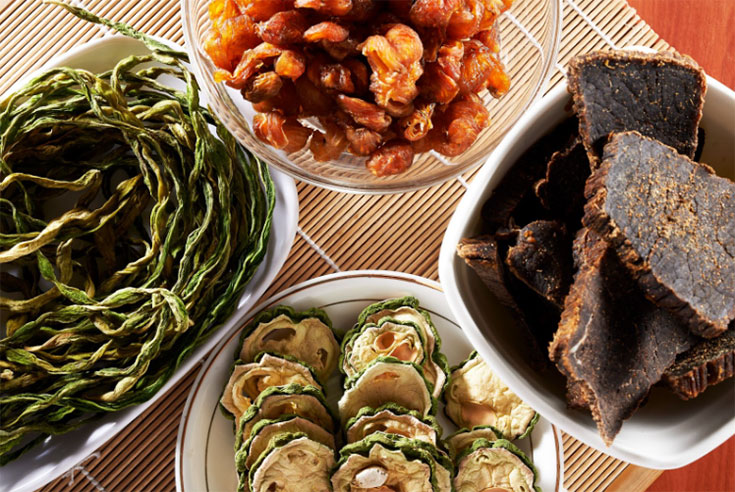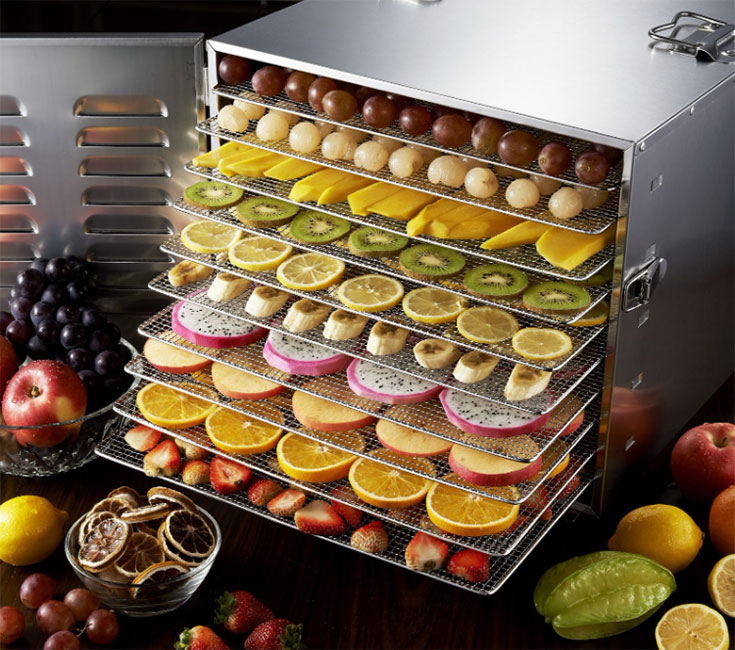
Perhaps you have never given much thought to owning a food dehydrator in the past, but you should. One of those underappreciated kitchen tools is a food dehydrator, which is an incredibly useful appliance that has many advantages you never knew were possible after only drying your food. You will find in this article how food dehydrator recipes are useful to cut time, cost, and wastage in your kitchen.
Save Time
Most consumers discover just how quickly a food dehydrator can prepare food. It’s unlike leaving foods such as fruits and vegetables to air dry which takes several days using a dehydrator. It’s possible to dry foods in several hours through the use of a heat source and airflow. Dehydrated foods are ideal for making quick snacks and meals, elegant instant foods /meals, and foods for outdoor activities like camping among other uses.
Prepare yogurt drops, veggie chips, dried fruit strips, jerky, fruit leathers, and granola in massive quantities during the weekend and you will find yourself using minimum time during working days preparing healthy foods. Chop vegetables or cook the rice a day before and then freeze and dehydrate them for easy rehydration of soup stock. On the one hand, the usage of dehydrated foods is even more preferable because it offers more variety, and options and less preparation when it comes to preparing or simply providing meals/snacks during traveling.
Save Money
Bulk foods purchased are usually left to spoil before they can be consumed. By dehydrating, you can purchase large batches of fresh produce at cheaper prices and retain them for several months once you have removed the moisture. A food dehydrator can be very effective with fruits and vegetables in season and when you have had a bumper harvest in your garden.
Everyone appears to offer dried onions, garlic, ginger, and other foundational herbs that occupy much less room than their fresh equivalents, can be easily measured for required recipes, and cost far less than purchasing more expensive herbed containers or bottles from a grocery store. You can also prepare your own tasty and nutritious imitations of the costly packaged meals and snacks of backpacking trails like the beef jerky is half the price of those in stores.
Reduce Food Waste
Approximately 1.1 bags of food per capita is said to be wasted in America per annum. This is a concern as old as the creation, what to do with fresh foods before they go bad. A dehydrator allows you to salvage foods that are almost ready for the bin and use them at a later time. Another great way to use those greens that have wilted, tomatoes that are slightly crushed, and nearly overripe berries is to dehydrate them when they start to lose their freshness.
The used parts of potato, carrots, or bread crusts are interesting snacks instead of something that has no value as waste. Don’t discard the pulp from the fruits after juicing: Roll the pulp in banana leaves and prepare fruit rolls. This is more so since dehydrated foods are going to occupy a much smaller space in your pantry than raw foods, and therefore are less likely to be forgotten and spoiled.
Camping and Hiking Food Preparation Made Easy
While planning for camping meals it may become tricky since meals planned must be those that are not perishable, light in weight, and do not occupy much space, but again, no refrigeration. Try dehydrated food for camping. It’s a way to make it simple. Take some yummy materials, and dehydrate them at home before the trip, and all these problems are solved.
The dried meals and protein-filled meals such as veggie chili, curries, and grains, soups require the addition of boiling water at camp. Small fruits in dried form, jerky in sticks and residualized nuts provide lightweight energy whilst on a trail. Adapt menus according to its groups’ favorites and restrictions, and employ ingredients with a lower risk of perishing. There is less trash to collect as well, and fewer cans, jars, and containers to pack out.

Use the Available Options and Plan Your Meals
Although fresh meats, fruits, and vegetables dry up in the refrigerator when exposed to air, the dried foods can last as long as you do if stored in an air-tight pack. That way, you can accumulate a diverse stock of just-add-water products such as onions, celery, carrots, potatoes, squash, beans, and corn among others. Every time you import dehydrated products, you save a lot of food that would otherwise go to waste. Perhaps used-up cooked rice, quinoa, oats, etc can be turned into instant grains that will cook to perfection at a later time. There is no limit to what your gourmet meals can be if you have your dehydrated ingredients on standby; soups, chilies, stews, and fried rice will be among them.
Create Healthy Biscuits and Cookies for Children and Animals
Dehydrating is an easy and safe method of making all-natural treats for children and animals choosing the ingredients yourself. For children with tender teeth or in a learning-to-chew phase, chop bananas, strawberries, apples, sweet potatoes, and any other food into small Chucky pieces. Find dehydrated foodstuffs, such as organ meats, salmon, pumpkin, greens, etc, and form tasty biscuits for pets. Personalize the nutrition and flavors realizing you won’t find any preservatives or artificial. It also makes treats you’d like to incorporate for encouraging good behavior in pets or training.
Conclusion
If you are prepared to start using the flexibility and several added features of a food dehydrator in your kitchen, you’ll find a range of various kinds of units to choose from. Be on the lookout for those that have features such as temperature control, fan options, and the amount of space needed to accommodate your desired amount of drying. All this you can find in Septree commercial food dehydrator. It is the simplest method to use. One must have time and learn the right procedure and methods of preparing and dehydrating food for a better experience. Then prepare to meet your new favorite kitchen appliance that is time and money-efficient, a waste saver with foods rich in nutrients as per your occasion!


Leave a Reply